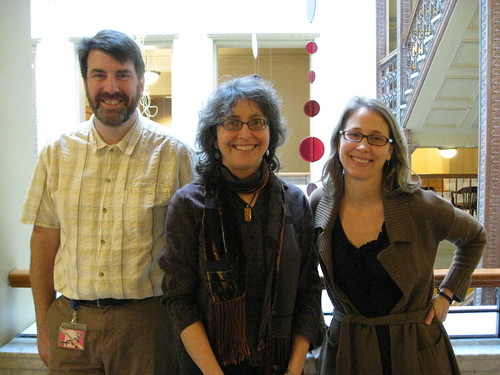Understanding the Citywide Tree Project
By Erica Timm

Less than a month ago, on Wednesday, April 13, 2011, Portland City Council unanimously adopted the Citywide Tree Policy Review and Regulatory Improvement Project (Tree Project). As Mayor Sam Adams proclaimed, “The Tree Project has been a journey. Thanks to our community’s tenacity, the Bureau of Planning and Sustainability’s leadership and critical assistance from other city bureaus, dozens of disparate viewpoints have been woven into a cohesive framework for the future of our trees.”
Inspired by the collaborative process and support from city leaders and the community, Friends of Trees sat down with Roberta Jortner and Morgan Tracy to learn more about the process, benefits, and changes we’ll see in the future as the policy is implemented. Jortner and Tracy, two of the lead city staff members on the Tree Project team at the Bureau of Planning and Sustainability, highlighted several key impacts of the new code.
Showcasing the Urban Forest and Improving Customer Service
A major benefit of the Tree Project is that it consolidates most city tree rules into one title, treating trees as a citywide asset. The consolidation creates a new title within city code just for trees, really showcasing the urban forest and elevating Portland’s Urban Forest Program. The provisions of Title 11, “Trees,” combined with updates to Portland’s zoning code, strengthen the city’s tools for managing the urban forest asset while providing flexibility for property owners and developers.
The Tree Project aims to sustain the quality of the forest by encouraging the retention of healthy trees and reducing overall loss by ensuring trees are replaced when they are removed. New standards will improve preservation of existing trees and tree planting on development sites, without significant impacts on permitting cost or time.
The new code is designed to enhance the transparency and consistency of the city’s decisions, making them easier to understand and more equitable. Public and private trees are both addressed through standardized systems for development and non-development situations. Additional customer service improvements include the creation of a single point of contact and a tree manual describing the benefits of trees, tree care, and tree-related rules. The Tree Project also calls for piloting a 24-hour hotline for tree-related questions and concerns.
Recognizing the Urban Forest is Dynamic & Changing
While it is always important to think ahead and plant the right tree in the right place, the code recognizes that the urban forest is dynamic and contains provisions allowing tree removal with replacement. This enables neighbors to change landscape designs that include trees, and provides flexibility for potential property enhancements that may be impacted by trees, such as solar access.
An improvement to the city’s existing, notoriously confusing tree permit system is a new streamlined and standardized permit system that will apply to all street trees with a trunk of three inches or larger in diameter and all private trees with trunks 12 inches or larger in diameter. Permits are required to remove private trees with trunks six inches or larger in diameter in some overlay zones and plan districts, so it is always good to check with the city prior to removing a tree. (Note: trunk diameter is measured at the 4.5-foot mark on the tree.)
A simple “tree-for-tree” replacement is required for most tree removals, including removing a single private yard tree. A person removing a large, healthy tree, or multiple trees, may be required to replace the tree “inch-for-inch” by planting multiple trees that equal the total trunk diameter of tree loss. If sufficient space is not available on the site to replace the tree(s) removed, the city forester may waive replacement or require payment into the city’s tree fund, which will be spent to plant trees within the same watershed as those removed.
Outreach, Implementation & Getting Involved
Some changes will take effect on July 1, 2011, but the majority of the changes, including the code consolidation into the new tree code (Title 11), the updated development standards, tree permit system, and some of the customer service enhancements, will take effect on February 1, 2013.
The city is now preparing to implement the programs established through the Tree Project and will be developing strategies to continue public outreach. Community support will be critical to help ensure that trees are protected, planted, maintained, and replenished through programs established through the Tree Project and other city and community programs. More information, including a project summary, can be found at the project website: http://www.portlandonline.com/bps/treeproject
– Timm is a Neighborhood Trees Specialist with Friends of Trees
